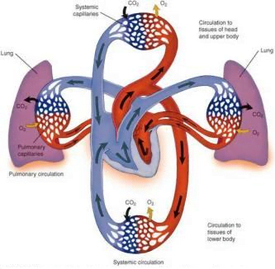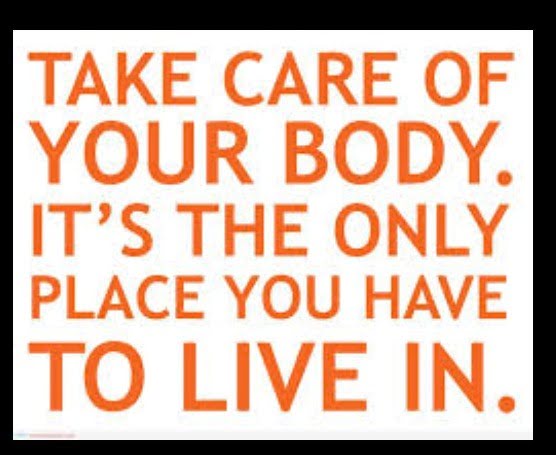The cardiovascular system
The cardiovascular system can be seen as a big system with smaller parts functioning in order to maintain optimal execution. The major parts involved are the lungs, heart and overall systemic vasculature (arteries, veins, etc.). These parts work as an integral unit in order to transport oxygenated or deoxygenated blood around the body.
Benefits of cardiovascular exercise
Consistent cardiovascular exercise can improve the transfer of oxygen from the lungs to the minor blood vessels.
Consistent cardiovascular exercise will also improve the performance of the heart as a pump and will increase the efficiency of blood transport into the surrounding vasculature. The constant flow of blood will also aid in maintaining the elasticity of your blood vessels.
Lastly, the likelihood of plaque or other blood vessel difficulties are a lot less with a healthy cardiovascular system.
In addition to the improvement of cardiovascular flow for the entire body, cardiovascular or aerobic type exercise also reduces the likelihood of “no-no” type risk factors or diseases. These include high blood pressure, increased bad cholesterol (LDL-cholesterol), obesity, or coronary heart disease to name a few. To put it simply, consistently keep active, or suffer dire consequences!
Different types of cardiovascular training
There are also different types of exercises that one can perform to improve cardiovascular function. The ultimate goal of each is to improve blood flow around the body. However, the way each type reaches that goal is different, and that difference is very distinct. As a result, when analyzing these two types of cardiorespiratory exercise types, one is definitely better than the other.
The two main types of cardiovascular training are continuous type exercise and high intensity interval type training.
Continuous type training is the type of exercise where there are no rest periods. The person exercises at a low intensity for a certain amount of continuous time (eg. jogging for 60 minutes straight).
In comparison, interval training is a type of exercise where there are rest periods in between each sprint or running interval. Interval training is typically done at a higher intensity, in comparison to continuous training, because the person will be able to rest in between each interval (eg. sprinting for 20 seconds, rest for 10 seconds and repeating this pattern 6 times). This type of exercise is also more common in highly athletic populations. However, anyone (novice or intermediate athletes) can utilize interval training with effectiveness in their own exercise routine, albeit at a more suitable and lower intensity.
Is there a difference in the amount of fat burned between these 2 types of exercises?
Yes, interval training is more intense. This allows an increased resting metabolic rate (relative to higher intensity exercise) more than low intensity exercise during continuous type training. In fact, interval training is a lot more efficient at using fat as a fuel in between each interval in order to restore energy for the muscles being worked.
Research has also found that high intensity intervals may use less energy during a work out. However, it will burn a lot more fat, making it one of the most efficient methods of burning fat! In addition to energy restoration during actual exercise, the recovery process will constantly use fat as a fuel to aid in aerobic recovery after the exercise ends. In essence, the more intense the interval training is, the longer the aerobic recovery process will occur after the completion of training.
American College of Sports Medicine (ACSM) guidelines for cardiovascular exercise
The ACSM guidelines are well known in the kinesiology realm as one of the better sources for prescribing doses of exercise from. The reason for this claim is that ACSM does not only deal with one component of fitness. Instead, ACSM goes into more depth when it comes to strength training or cardiovascular exercise. Speaking about cardiovascular exercise, the ACSM guidelines recommend at least 500 kcal/week of expenditure through cardiovascular exercise to see a huge reduction in cardiovascular disease or risk of mortality. To reach another drop in the risk of these conditions, one would have to exercise up to 1000 kcal/week.
Furthermore, the requirements of the ACSM guidelines are simple and can even be reached through obtaining 10,000 steps a day (for example). I have attached a figure below to show the full spiel of what the ACSM guidelines state. By consistently following these guidelines, you will drastically increase the likelihood of healthy bodily function and healthy living.
Saying Thanks
With this blog being my last, I would like to take this opportunity to thank everyone who has helped me get so far in my practicum experience.
Firstly, thanks to all of the great therapists working at Pivotal Ft. Sask. With a great group of therapists at this location, it’s highly likely that any type of injury can come treated!
To all of the physiotherapy assistants. Thank you so much for teaching me everything from making hot packs, folding fitted sheets, and teaching me the modalities.
To the reception team. Thank you for always greeting me and making me smile as I enter and leave the clinic. The happiness makes each day very enjoyable.
To Cathy, the website editor. Thank you for your help on editing and posting these blogs, while making them look stellar as well.
Lastly, thank you to all of my mentors: Raj, Janelle & Andrea. Thank you for putting up with me the past few months. Thank you for teaching me everything that I can handle while doing it with a great attitude. This practicum has been a humbling experience and has made me passionate about pursuing physiotherapy. In closing, that’s it & that’s all folks, thanks for all of the memories!
Will Le BScKin Student
Images:
www.healthstream.com/hiit
http://www.ideafit.com/fitness-library/from-1998-to-2011-acsm-publishes-updated-exercise-guidelines
References:
Garber, C. E., Blissmer, B., Deschenes, M.R, Franklin, B.F., Lamonte, M. J., Lee, I. M., Nieman, D.C.,…Swain, D. P. (2011). Quantity and quality of exercise for devloping and maintaining cardiorespiratory, musculoskeletal, and neuromotor fitness in apparently healthy adults: guidance for prescribing exercise. Journal of the American College of Sports Medicine, 1334-1359.
Herodek, K., Simonovic, C., Pavlovic, V., & Stankovic, R. (2014). High intensity interval training. Activities in Physical Education and Sport, 4(2), 205-207.




